
String Art Generator
String Art Generator by Yiran is a grasshopper plugin which generates a string art sequence based on an input image. You can
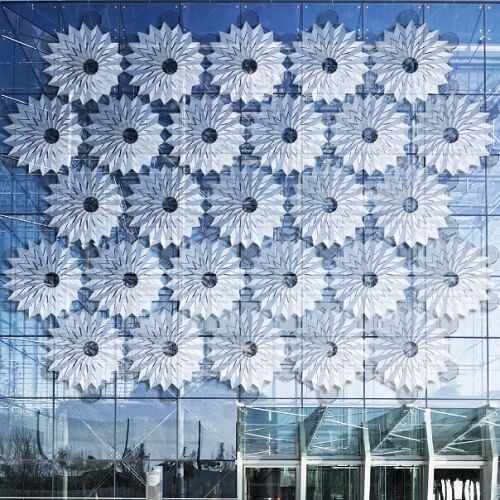
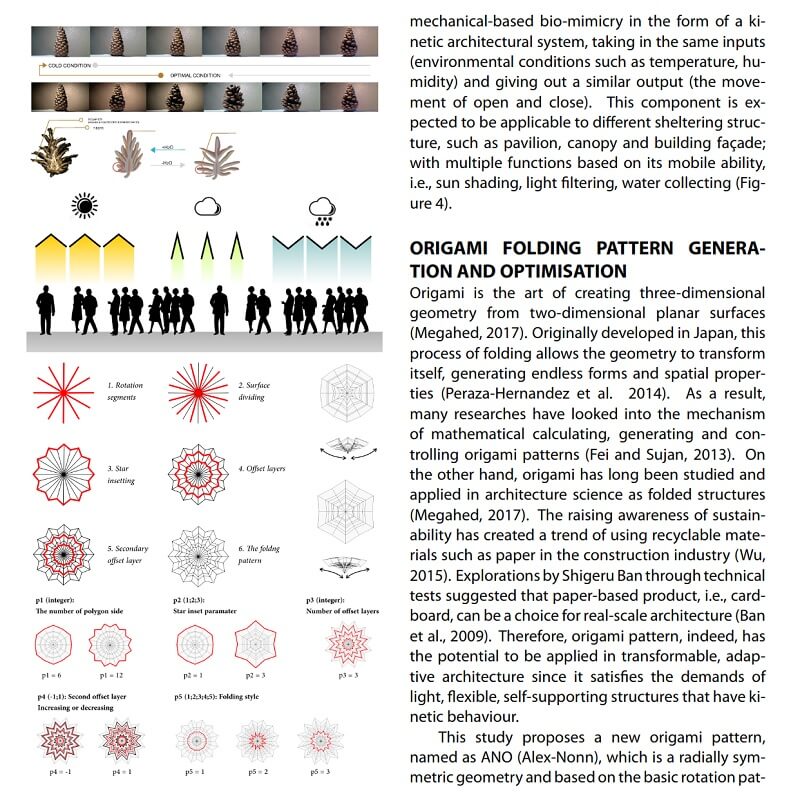
The design process of dynamic architecture has been an emerging topic in recent studies, in which researchers try to find an effective method of generating and controlling adaptive components.
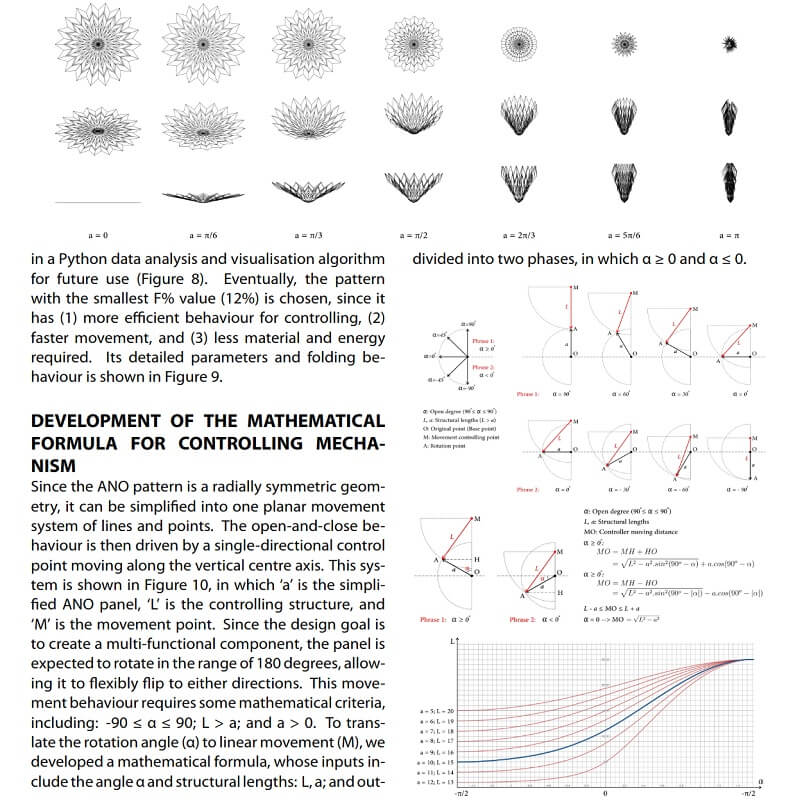 In this paper by Binh Vinh Duc Nguyen, Thanonchai Watlom, Chengzhi Peng and Tsung-Hsien Wang, authors present a digital-physical modelling process that seeks to explore tectonic fusion of origami folding patterns and micro-kinetic movements.
In this paper by Binh Vinh Duc Nguyen, Thanonchai Watlom, Chengzhi Peng and Tsung-Hsien Wang, authors present a digital-physical modelling process that seeks to explore tectonic fusion of origami folding patterns and micro-kinetic movements.
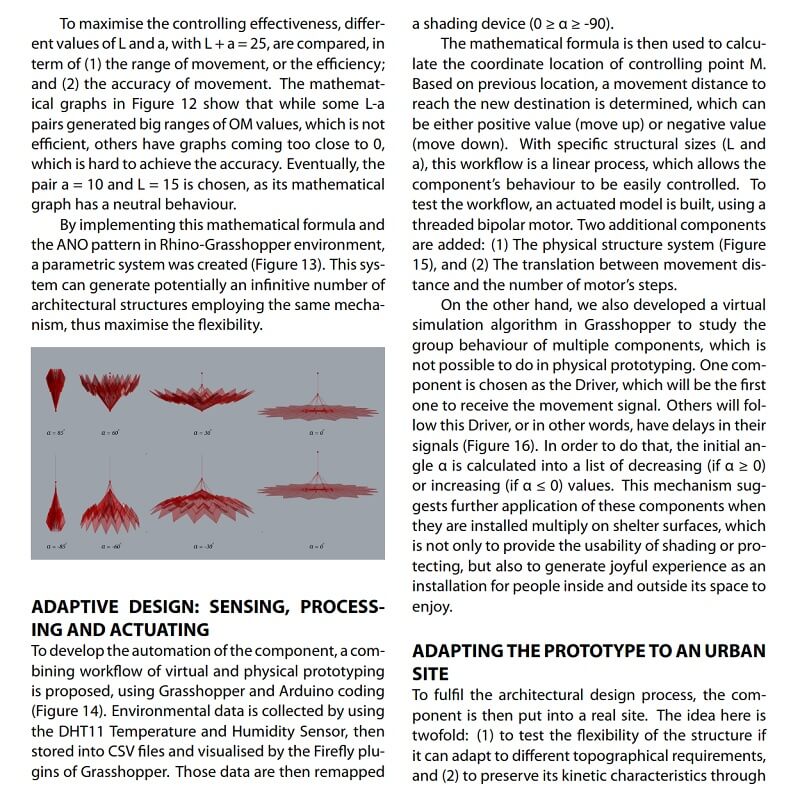 A flexible modular prototype system is developed and evaluated through combining origami-based fabrication simulation and mathematical characterisation mimicking the pinecone’s nastic movements. The modular design system is then applied to an urban site as a test case study.
A flexible modular prototype system is developed and evaluated through combining origami-based fabrication simulation and mathematical characterisation mimicking the pinecone’s nastic movements. The modular design system is then applied to an urban site as a test case study.
 The results show how the pinecone-like nastic movements may be translated into design and fabrication of an adaptive architecture. Authors discuss the lessons learned from the digital-physical prototyping process finding the balance between geometric flexibility and micro-kinetic adaptability.
The results show how the pinecone-like nastic movements may be translated into design and fabrication of an adaptive architecture. Authors discuss the lessons learned from the digital-physical prototyping process finding the balance between geometric flexibility and micro-kinetic adaptability.
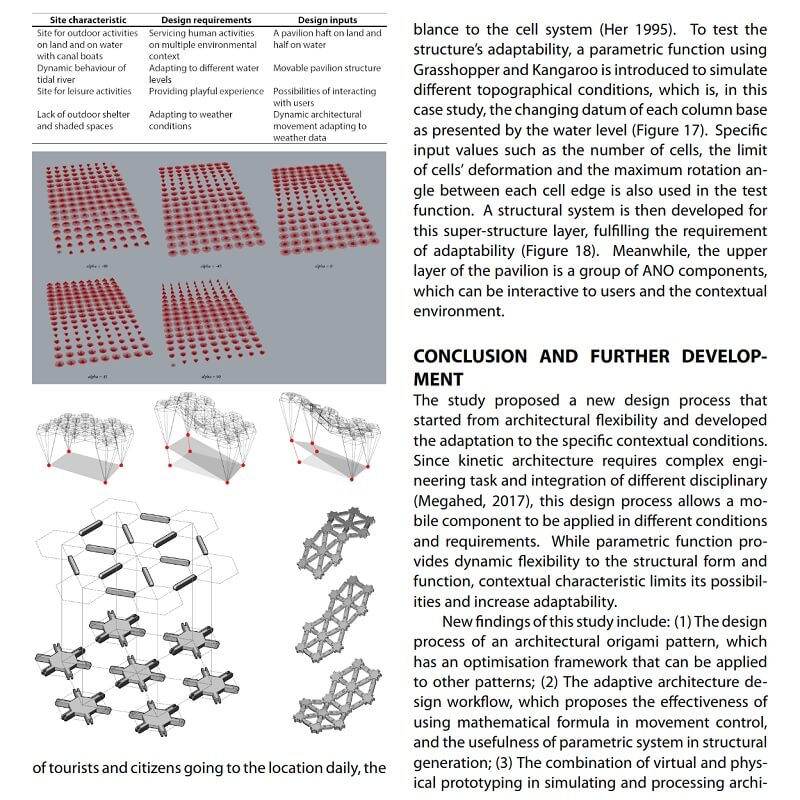
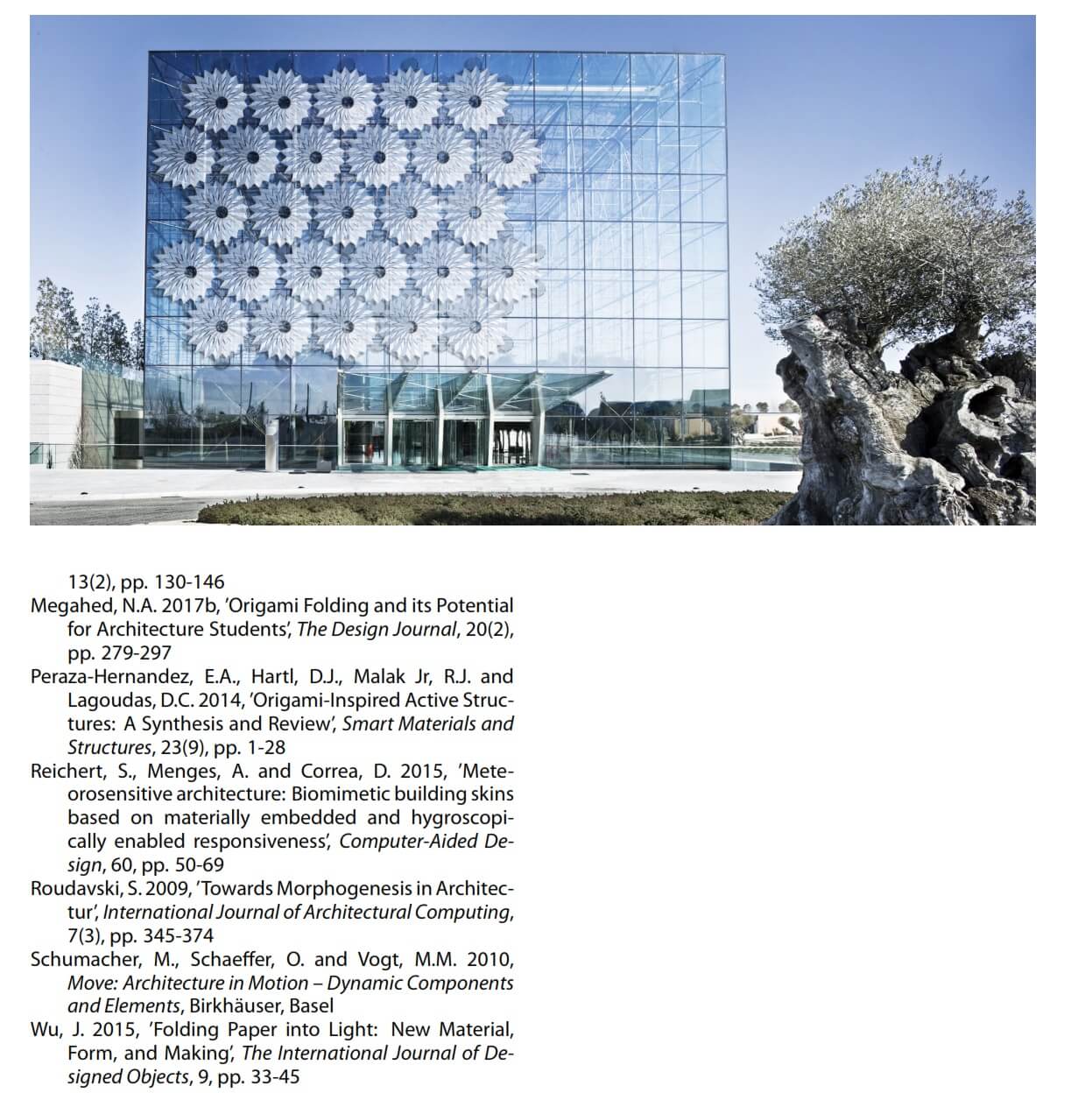

String Art Generator by Yiran is a grasshopper plugin which generates a string art sequence based on an input image. You can

This paper by Alessandro Liuti, Sofia Colabella, and Alberto Pugnale, presents the construction of Airshell, a small timber gridshell prototype erected by employing a pneumatic formwork.

In this paper by Gregory Charles Quinn, Chris J K Williams, and Christoph Gengnagel, a detailed comparison is carried out between established as well as novel erection methods for strained grid shells by means of FE simulations and a 3D-scanned scaled physical model in order to evaluate key performance criteria such as bending stresses during erection and the distance between shell nodes and their spatial target geometry.

In this paper by Frederic Tayeb, Olivier Baverel, Jean-François Caron, Lionel du Peloux, ductility aspects of a light-weight composite gridshell are developed.
Parametric Ideas for Architects @2025